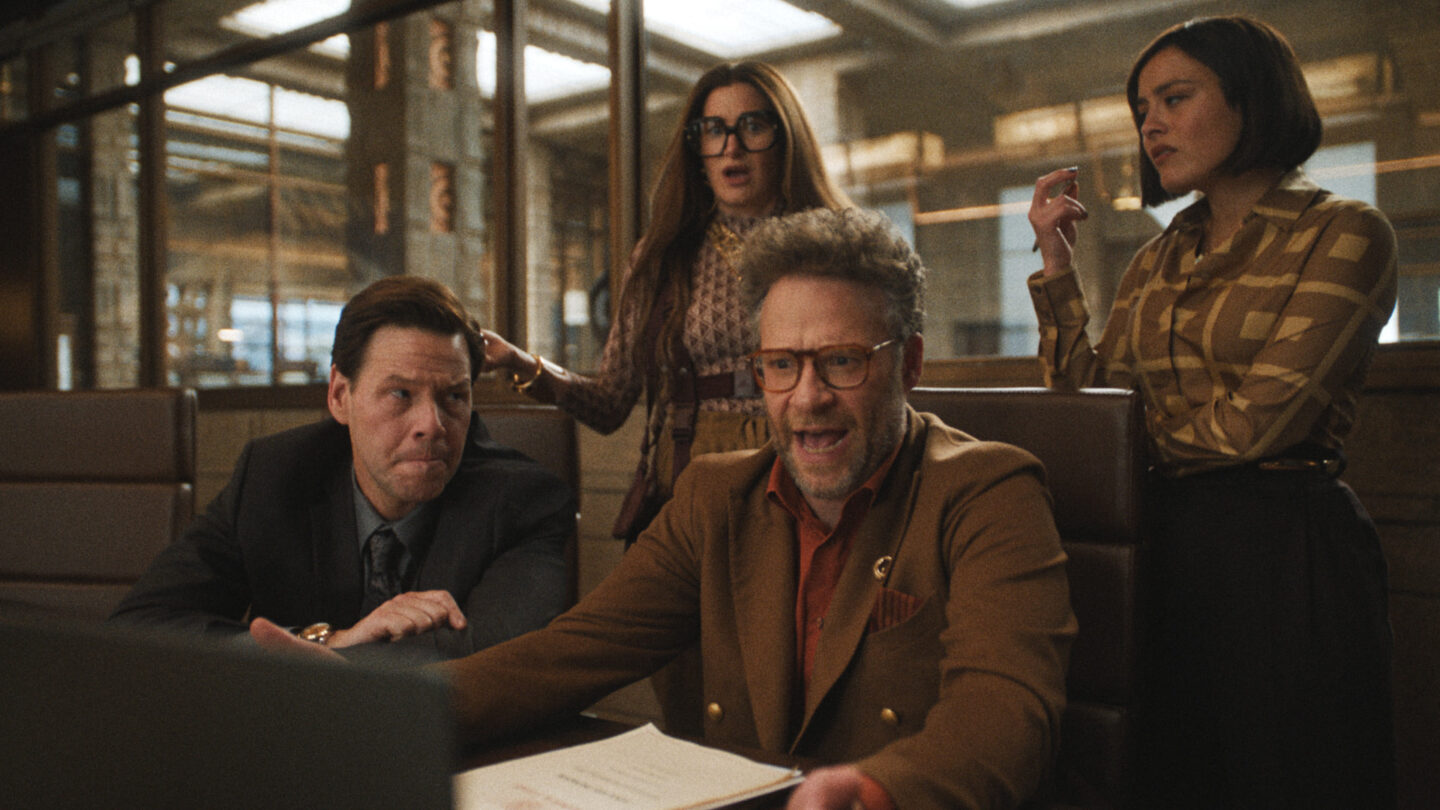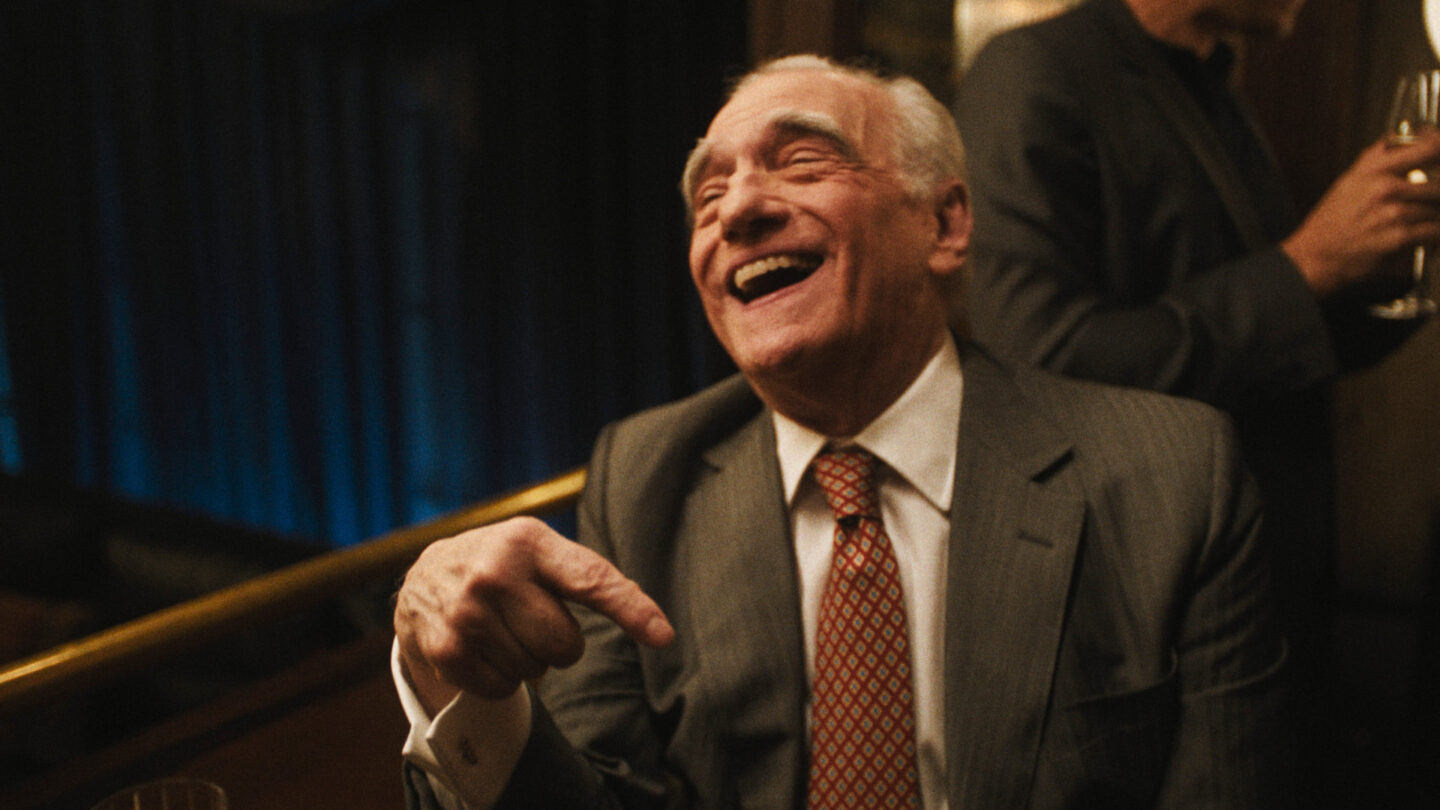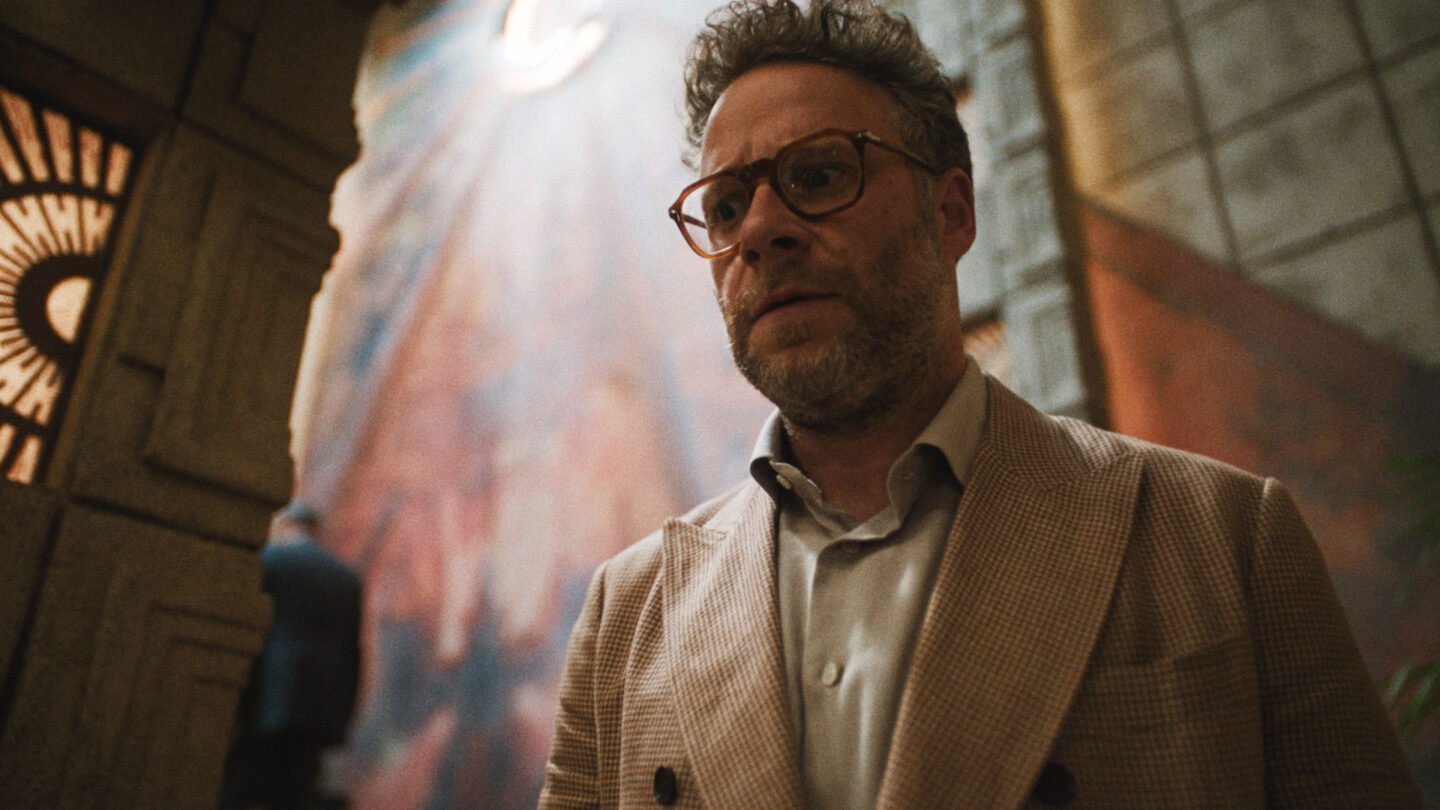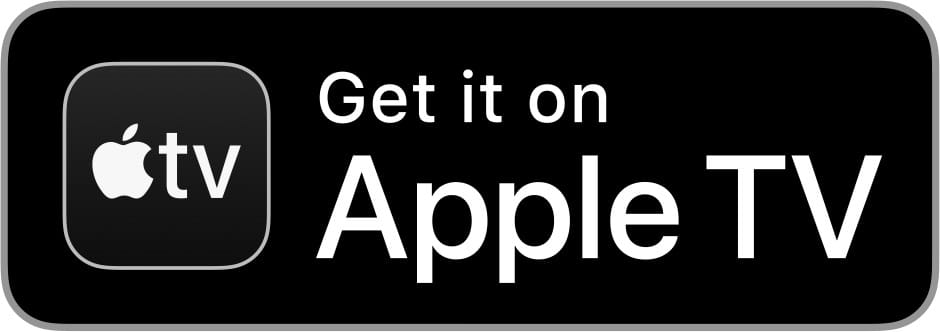Apple TV+ comedy The Studio brings a biting perspective to the entertainment industry, pulling back the curtain on Hollywood’s most absurd realities. The series, starring Seth Rogen, takes viewers deep into the chaotic world of a legacy movie studio struggling to survive in modern-day Hollywood, which is decidedly different from classic Tinseltown. So this The Studio review says green-light this one for your watchlist.
Unlike showbiz satires before it, The Studio focuses tightly on the clash between artistic vision and evolving corporate demands in a streaming-media world. And where else are you going to see Martin Scorsese weep and Ron Howard go ballistic? See three reasons to watch it below.
3 reasons to watch The Studio on Apple TV+
From The Studio‘s storytelling approach to its stellar cast and seemingly never-ending reserve of celebrity cameos. So this The Studio review offers three compelling reasons why the sharp Hollywood satire deserves a spot on your watchlist.
It’s worth noting that critical acclaim came out of the gate strong, while audience enthusiasm trailed somewhat. Rotten Tomatoes’ Tomatometer critical rating is 95% fresh, while it Popcornmeter rating from viewers is 69% fresh. Make of that what you will. Not everyone finds the insider Hollywood stuff entertaining, and stress- and embarrassment-based humor doesn’t float everyone’s boat.
1. Strong storytelling in satirical take on today’s nervous Hollywood

Photo: Apple TV+
At the core of The Studio sits a paradoxical love letter to filmmaking wrapped in a scathing critique of the industry itself. This satirical comedy doesn’t merely poke fun at Hollywood. It dissects the system with surgical precision while maintaining a surprising fondness for the art form.
The Studio centers on Matt Remick (Seth Rogen), a cinephile and newly appointed head of the fictional Continental Studios. He finds himself thrust into leadership after his predecessor Patty Leigh (Catherine O’Hara) is fired following a string of flops. As someone who “eats, sleeps and breathes movies,” Matt has spent 22 years climbing the corporate ladder to reach this position — a dream job that he acknowledges might destroy him.
The setting is contemporary Hollywood, but one in steep decline. Unlike the glamorous portrayal of the industry in classic films, The Studio presents a business beset by far-flung competition and under extreme pressure from conglomerates to only make bank. This backdrop creates an environment where Matt and his team of executives must constantly battle their insecurities while dealing with narcissistic artists and corporate overlords.
Rogen vs. Cranston
Matt’s initial excitement quickly sours when cheesy-yet-menacing CEO Griffin Mill (Bryan Cranston) informs him that Continental has acquired the rights to the Kool-Aid Man — a transparent attempt to replicate the success of Barbie 2. This commercial mandate stands in stark contrast to Matt’s stated goal of reviving cinema as an art form. The tonal dissonance between Matt’s artistic aspirations and corporate reality establishes the central conflict that drives the narrative forward.
In one particularly revealing scene, Matt confesses to Patty: “I got into this because, you know, I love movies. But now I have this fear that my job is to ruin them.” As it happens, that’s nearly a direct quote from a conversation Rogen and co-creator Evan Goldberg once had with a Hollywood executive.
Regarding the entertainment’s obsession with IP, The Kool-Aid movie becomes the perfect symbol of the artist’s struggle in a corporate world. Matt tries to reshape it into a self-aware, thoughtful, Barbie-style hit by buying a Martin Scorsese script about Jonestown’s Kool-Aid-drinking suicide cult. What a coupe! But in the end, Matt can’t go through with it and pretends he just bought the script to kill it, delighting the boss but inadvertently crushing poor Scorsese in the process.
And along with inside jokes and industry references comes cinematic homages. the show incorporates visual tributes to film history. One episode is filmed in what appears to be a single take, while another salutes film noir as it chronicles Olivia Wilde’s attempt to make an arty 35mm update of Chinatown.
2. Impressive character development and wild celebrity cameos

Photo: Apple TV+
The ensemble cast of The Studio Apple TV+ elevates the series from a standard Hollywood satire to a character-driven exploration of the film industry’s inner workings. With performances that blend comedy with surprising emotional depth, the actors breathe life into the complex world of Continental Studios.
In a significant departure from his typical laid-back stoner characters, Rogen delivers a compelling performance as Remick, the newly appointed head of Continental Studios. As someone who “eats, sleeps, and breathes movies,” Matt embodies the passionate cinephile thrust into the corporate machine. What sets Rogen’s portrayal apart is his ability to convey Matt’s constant internal struggle between artistic integrity and commercial demands, with constantly panicky results. He seems like a Woody Allen character.
And The Studio‘s supporting cast ain’t bad, either
- Catherine O’Hara as Patty Leigh delivers another indelible creation as Matt’s mentor and the former studio head. Based on producer Amy Pascal (who was fired from Sony Pictures following an email hack involving Rogen’s 2014 film The Interview), Patty is a complex blend of industry veteran wisdom and bitter resentment. O’Hara’s performance shines especially in scenes with Rogen, where she shifts seamlessly between berating him for betrayal and negotiating production deals.
- Kathryn Hahn as Maya steals some scenes as Continental’s fast-talking and incredibly blunt marketing chief. She’s the embodiment of Hollywood marketing speak and commercial priorities.
- Ike Barinholtz as Sal Saperstein, Matt’s best friend and business associate, provides both comic relief and surprising insight. Rogen specifically wrote this role for Barinholtz, explaining their dynamic as “two idiots, one idiot thinking he’s a little smarter than the other idiot.” Their friendship forms one of the show’s emotional anchors amidst the corporate chaos.
- Chase Sui Wonders as Quinn Hackett, Matt’s former assistant promoted to creative executive, represents the younger generation’s ambition and idealism. She’s caught between artistic passion and industry disillusionment.
- Bryan Cranston as Griffin Mill rounds out the main cast as Continental’s eccentric CEO. Cranston creates a character who presents himself as cool and loose, 1970s style, while embodying the most anti-creativity commerciality possible with his every utterance.
Hey, watch it just for the celeb cameos
Mainly, the cast excels at conveying the desperation behind Hollywood’s facade of confidence. The characters’ palpable underlying panic creates a vulnerability that makes them surprisingly relatable. But one of The Studio‘s best characteristics comes with the constant stream of celebrity cameos. And they’re not just walk-ons. Scorsese, known for appearing briefly in some of his films, acts in full scenes in one episode of The Studio — and he breaks down, sobbing, in one. Where else you gonna see Scorsese weep while Charlize Theron chases the witless execs out of a party?
Supposed Hollywood nice-guy director Ron Howard — he played Richie Cunningham on Happy Days, fer chrissakes! — gets a turn, too. In one episode, he turns in a passion-project to Continental, essentially for final approval. But it’s way too long and one deeply personal and seemingly endless scene resonates only with Howard. Even the star of the movie, Anthony Mackie, hates it (another cameo). But no one wants to tell Howard. Finally, Remick overcomes some well-laid backstory and a deeply humiliating anecdote to confront Howard. And Howard loses it in a way you simply can’t see anywhere else.
3. Visual style and critical acclaim

Photo: Apple TV+
Beyond its storytelling and performances, The Studio distinguishes itself through exceptional filmmaking that mirrors the cinematic tradition it celebrates.
From a technical standpoint, The Studio employs a distinctive visual approach that sets it apart from typical comedy series. Directors Rogen and Goldberg favor frenetic camera movements and extended one-take sequences that create anxiety in the audience similar to what the characters are feeling.
Notably, the series pays visual homage to the New Hollywood films of the mid-1960s to early ’80s that Remick worships. This aesthetic choice carries thematic weight, as that era overlapped the decline of the Golden Age studio system. The production design shown in the studio offices is another a good example. The aging majesty feels tomblike for a reason. Streaming is killing what’s left of it.
A percussion-heavy jazz score by Antonio Sanchez (Birdman) complements the visual style, enhancing the sense of urgency throughout.
Critics love it, fans like it
The critical response to The Studio has been overwhelmingly positivem, even more-so than this The Studio review. As of its release, the series boasts a certified fresh critic score of 95% on Rotten Tomatoes. Some called it the best show of the year so far and the best of its kind since Robert Altman’s The Player (1992).
But in contrast to its critical acclaim, audience reception has been somewhat more divided, with a 69% popcorn meter score on Rotten Tomatoes. Hey, Seth Rogen and yet another Hollywood satire aren’t for everyone.
Nevertheless, the series has generated significant online buzz, particularly regarding specific episodes. The Sarah Polley-directed episode, featuring an elaborate one-take sequence, has received special attention. As one viewer noted on social media: “I am all in on The Studio almost entirely because of Sarah Polley in the second episode.” It’s a good one.
The Studio review bottom line: Green-light this one

Photo: Apple TV+
The Studio blends sharp industry critique with genuine appreciation for filmmaking. Through its clever storytelling, stellar performances, and exceptional production, the series offers viewers a rare glimpse into Hollywood — the good and the bad.
Rogen and the talented ensemble cast bring authenticity to their roles, making even the most absurd situations feel grounded and relatable. Their portrayals highlight the constant tension between artistic ambition and commercial demands that defines modern Hollywood.
Though audience reactions remain mixed, the show’s critical acclaim speaks to its success in capturing both the comedy and tragedy of an industry at a crossroads. Whether viewers come for the laughs or stay for the commentary, this The Studio review finds the show proves itself worthy of attention as it chronicles an entertainment world struggling to redefine itself. And some of those cameos are priceless.
Watch The Studio on Apple TV+
Season one of The Studio up to episode three is now streaming on Apple TV+, with new episodes on Tuesdays after 6 p.m. PT. Apple TV+ is available by subscription for $9.99 with a seven-day free trial. You can also get it via any tier of the Apple One subscription bundle. Customers who buy a new iPhone, iPad, Apple TV, Mac or iPod touch can enjoy three months of Apple TV+ for free.
After launching in November 2019, “Apple TV+ became the first all-original streaming service to launch around the world, and has premiered more original hits and received more award recognitions faster than any other streaming service. To date, Apple Original films, documentaries and series have been honored with 471 wins and 2,090 award nominations and counting,” the service said.
Apple TV+ is home to more than 200 exclusive movies and TV shows (including breakout soccer comedy Ted Lasso). The service also offers documentaries, dramas, comedies, kids shows and more.


